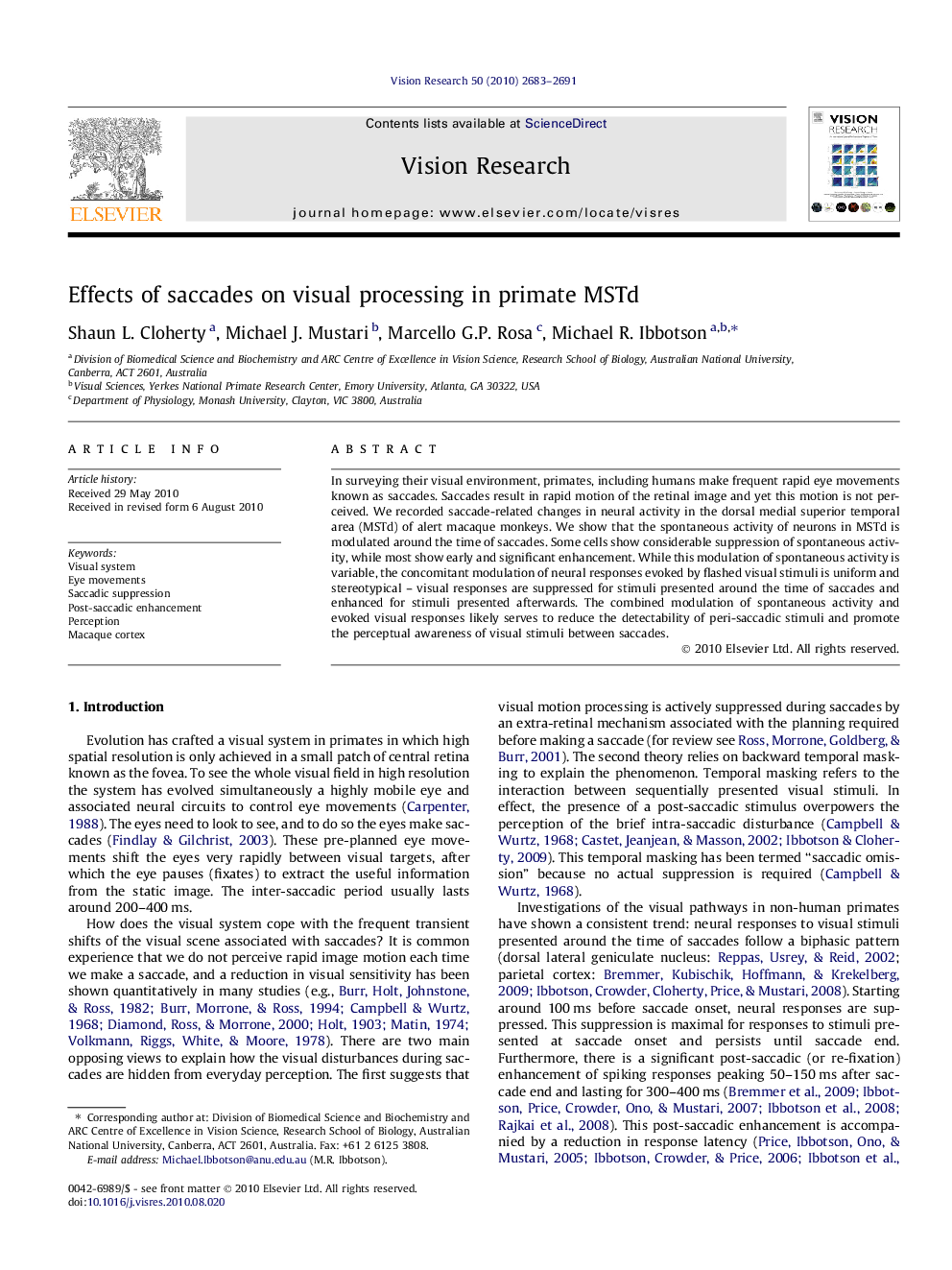| Article ID | Journal | Published Year | Pages | File Type |
|---|---|---|---|---|
| 4034222 | Vision Research | 2010 | 9 Pages |
In surveying their visual environment, primates, including humans make frequent rapid eye movements known as saccades. Saccades result in rapid motion of the retinal image and yet this motion is not perceived. We recorded saccade-related changes in neural activity in the dorsal medial superior temporal area (MSTd) of alert macaque monkeys. We show that the spontaneous activity of neurons in MSTd is modulated around the time of saccades. Some cells show considerable suppression of spontaneous activity, while most show early and significant enhancement. While this modulation of spontaneous activity is variable, the concomitant modulation of neural responses evoked by flashed visual stimuli is uniform and stereotypical – visual responses are suppressed for stimuli presented around the time of saccades and enhanced for stimuli presented afterwards. The combined modulation of spontaneous activity and evoked visual responses likely serves to reduce the detectability of peri-saccadic stimuli and promote the perceptual awareness of visual stimuli between saccades.
Research highlights► Spiking activity of neurons in MSTd is modulated around the time of saccades. ► Visual responses are suppressed for stimuli presented during saccades and enhanced afterwards. ► Spontaneous activity is enhanced during and immediately after saccades. ► Detectability of visual stimuli is reduced during saccades and enhanced afterwards. ► Modulation of spiking activity leads to perceptual omission of peri-saccadic stimuli.
